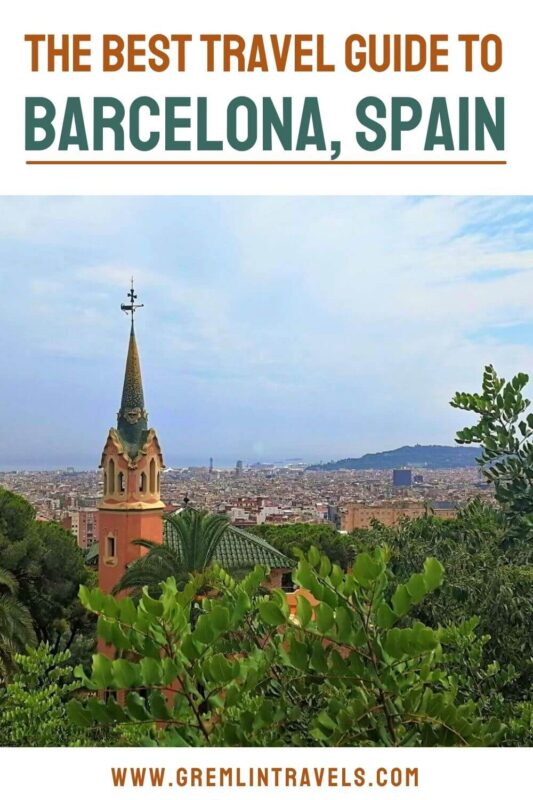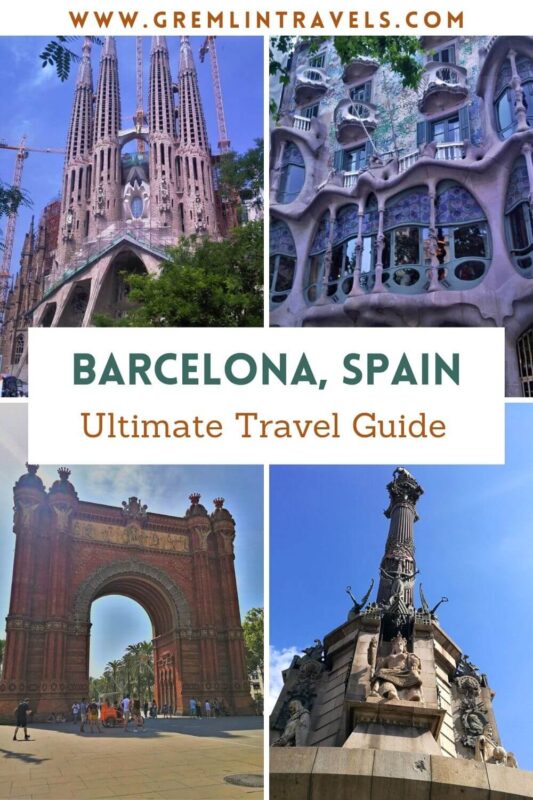Barcelona
Travel Guide
Welcome to our Barcelona travel guide, exploring Spain’s second city that has it all. Long sandy beaches, incredible architecture and world class dining alongside heaps of culture, great nightlife and good weather.
With architectural sites dating back over 2000 years, a Gothic old town dating back to the 14th century, and whimsical architecture from Gaudi dotted throughout the city, the sights to see in Barcelona are endless. This is before you even get a glance at the sandy beaches, countless museums and greenery that also awaits. There really is something for everyone in this city, be it a backpacking traveller, a romantic getaway or even a family holiday. The range of dining options covers traditional Spanish and Catalan cuisine to high end Michelin star experiences, and everything in between.
Travel Guide Contents
Check out our other Spain Travel Guides:
Seville Travel Guide | Madrid Travel Guide | Malaga Travel Guide
Barcelona Travel Guide
How to get to Barcelona
The most popular and common way to arrive in Barcelona is by air into Barcelona Airport (BCN) is located 12km southwest of the city centre and is a large airport catering mostly to domestic and European flights. It is a modern, well-connected and well-equipped airport with lots of shops, restaurants and lounges. The airport has two terminals. If you’re arriving in Barcelona by train, then you’ll likely arrive at Barcelona Sants, which is located 3.5km from downtown Barcelona. Barcelona Sants is a clean, modern and well-equipped train station catering to local, suburban and high-speed trains. Here are the best options for how to get to Barcelona city centre from the airport and Barcelona Sants train station:
Train from Airport – The train from the airport to the city centre costs €5.15 ($5.90) per person, one way and departs around every 30mins. The train stops at Barcelona Sants (in 20min) and Passeig de Gracia (in 25min)
Metro from Airport – The metro line L9 Sud runs from Barcelona airport metro station to the city centre in around 32 minutes. It departs the airport every 7 minutes but doesn’t stop at the most major stations in Barcelona city centre, so it’s not the most convenient option, as you will need to change. Tickets cost €5.15 ($5.90) per person, one way.
Taxi from Airport – Getting a taxi from the airport to Barcelona city centre can be an expensive option, however, if you’re in a group or in a rush, it can be a good option. A taxi should cost around €25-30 ($30-37) and will take approx 30 minutes to get to the city centre. Available from the taxi rank outside arrivals
Aerobus from Airport – The Aerobus is the airport transfer bus from Barcelona Airport to the city centre. Tickets cost €5.90 ($7.20) per person, one way or €10.20 ($12.50) per person, return. The bus departs from the airport every 5 minutes and takes approx 35min to reach the city centre, stopping at Plaza España, Gran Via-Urgell, Plaza Universitat and Plaza Catalunya. This is our preferred option for getting to and from the airport as it’s convenient, quick and easy
From the Train Station – There are three main ways to get from Barcelona Sants train station to the city centre. The first is to walk, it is a 42-minute walk from the station to La Rambla. The second is to grab a taxi from outside the station, a ride into downtown Barcelona should cost around €16 ($18) and take around 10-15 minutes. The third option is to take the metro. Line 3 runs from the station to downtown Barcelona (and other stops) every few minutes and a single ticket costs €2.40 ($3). If you’re getting the train from elsewhere in Spain or Europe to Barcelona, we recommend booking your train tickets in advance on Trainline Europe, which will save you both time and money.

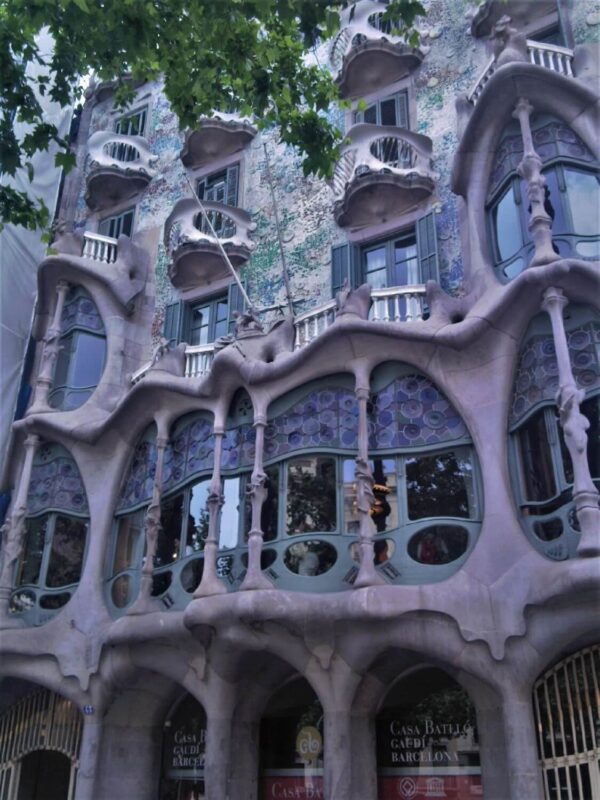
Areas to stay in Barcelona
Being a large city, there are various areas of Barcelona city, all offering different features for visitors. Picking the most suitable areas to stay largely depends on what sort of experience you want from Barcelona, what your budget is and what facilities you need and want. Let’s take a look at the most popular areas to stay in Barcelona:
La Rambla/Plaza Catalunya – This is the main street in the downtown area of Barcelona. It’s a little touristy but, it’s close to most of the main sights, packed full of shops and restaurants, and has great transport links to the rest of the city, which makes it an ideal base for any first-time traveller to Barcelona
Barri Gòtic (Gothic Quarter) – Located just off from La Rambla, the maze that is the Gothic Quarter is enchanting, home to many restaurants, shops and great architecture, this is where we’d recommend staying in Barcelona for the best experience. Transport links can be found a short walk outside the Gothic Quarter on all sides
El Born – Just a step over from the Gothic Quarter, El Born is home to old streets but with more emphasis on boutique shops and eateries. It feels a little more local than the Gothic Quarter
El Raval – Located on the other side of La Rambla, El Raval is the arts and cultural hub of downtown Barcelona. Once the red light district of the city, its previous reputation is starting to fade and gentrification over the last few years has led it to become an area for independent shops and restaurants
Barceloneta (Beach) – Formerly a fishing village, Barceloneta is abundant in seafood tapas bars and restaurants and is the liveliest beach area in Barcelona. It’s also the closest beach to the centre so it is a good base for anyone who is looking to be close to the beach and within walking distance to the Gothic Quarter. This is also an ideal location for families to stay in Barcelona
Eixample – Located north of Plaza Catalunya, this large neighbourhood is open and bright and is home to some of the most iconic sites in Barcelona, including Gaudi’s Sagrada Familia. Scattered throughout you will also find upscale shops, and contemporary bars and restaurants
Accommodation in Barcelona
There are plenty of accommodation options to choose from in Barcelona, just as you’d expect. For first time visitors to the city, we would recommend staying near La Rambla to be in the best possible position to access the main sights and for a good selection of bars, restaurants and shops. During peak season, prices start at around €20 ($25) per person for a bed in a hostel dorm, an average of €80-€140 ($95-$160) for a double hotel room, to over €240 ($270) per night in some of the best hotels in the city. There are so many great hotels in Barcelona, this is a selection of some of our top picks of where to stay in Barcelona:
Budget Hostel | Rodamon Hostel – Located on Avenue Diagonal, Rodamon Hostel is in a perfect location for exploring Barcelona. The hostel features simple and modern rooms in a variety of options, from dorms, private rooms and family rooms and has a communal lounge and kitchen and a nice roof terrace
Mid-Range Hotel | B-Hotel – Situated in the Eixample district, B-Hotel offers great value for money with spacious, modern rooms, good service and a rooftop pool and great views
Mid-Range Hotel | Motel One Barcelona-Ciutadella – Motel One is in a great location for anyone but particularly families with small children as it’s close to the beach and the zoo and park, and still only a 20-minute walk from La Rambla. Rooms are comfortable and modern and the rooftop terrace has great views
High-End Hotel | Hotel Barcelona 1882 – Just a few minute’s walk from La Sagrada Familia, the 4-star Hotel Barcelona 1882 has beautiful rooms, great service and food and a stunning rooftop terrace with a pool that is the perfect place to chill out and relax in the centre of Barcelona
Luxury Hotel | Almanac Barcelona – This is where to stay for absolute luxury in Barcelona. An excellent location coupled with outstanding service, beautiful rooms and some of the best views over the city from the rooftop bar, terrace and pool area, make this a great choice for anyone wanting to splash out in Barcelona
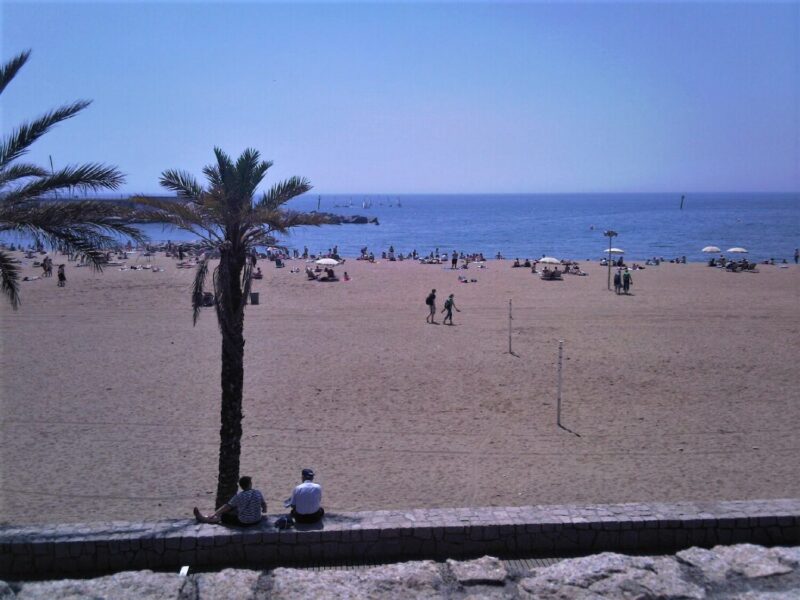

How to get around Barcelona
Although Barcelona is a large city, the major attractions generally surround La Rambla and are within reasonable walking distance to each other. However, there are other areas, sites and attractions that are scattered across the city so you will likely need some form of transport if you want to explore outside of the main tourist areas and see all that Barcelona has to offer. The main transport options for how to get around Barcelona are:
Metro – This is by far the most popular way to get around Barcelona and the quickest and most convenient. There are 12 lines (L1 to L12, colour coded) and 160 stops, providing coverage across most of the city. Options for tickets include the T casual card for 10 journeys at €11.35 ($14) and single tickets at €2.40 ($3) each. Tickets can be purchased in metro stations at counters or ticket machines, which have options available in English
Tram – With only 2 lines mainly covering residential areas, the tram won’t be useful for most tourists, but it is there if it’s convenient and covers the area near the zoo and further afield
Bus – Barcelona buses cover over 100 routes across the city, so the bus is also a useful way to get around, particularly for areas that the metro doesn’t cover. Ticketing is the same as the metro and tickets for either will cover both. The buses in Barcelona have all been adapted with low floors for people with reduced mobility
Hop-on, Hop-off Bus – Technically not a mode of public transport but a great option for anyone who wants to cover the sights of Barcelona over a shorter period. The buses operate daily and have 2 routes to choose from. Tickets are €30 ($36) for 1 day or €40 ($48) for 2 days
Taxi – Taxis are available all over the city. Yellow and black taxis have a green light if they are free and they run on a meter. They are generally quite reasonably priced for a big city. Ride-hailing apps also operate in Barcelona and can offer reduced fares compared to standard taxis
Things to do in Barcelona
Barcelona is packed full of things to see and do, from architectural wonders to zoos, shopping, beaches and museums, there is something for everyone. Here’s our compact list of the top 5 things to do in Barcelona:
La Sagrada Familia – This unfinished Roman Catholic basilica is a UNESCO world heritage site and is undeniably amazing. Having been under construction for over 100 years, it is a must-see in Barcelona. Tickets to go inside cost €26 ($32) per person
La Rambla – This large tree-lined, pedestrianised street in the city centre is full of cafes, restaurants, stalls and street performers and is one of the most famous streets in Barcelona
Gothic Quarter – Explore the narrow medieval streets of the atmospheric Gothic Quarter to find shops, bars and restaurants and take a stop at Plaça Reial for lunch with a view
Barceloneta Beach – Unwind from the city with some sunbathing and a dip in the sea at the long and sandy Barceloneta beach. There are also numerous bars and restaurants all along the beach
Mercado de La Boqueria – Barcelona’s main public market off La Rambla is vibrant, busy and full of amazing produce and food. This is a must-do when in Barcelona
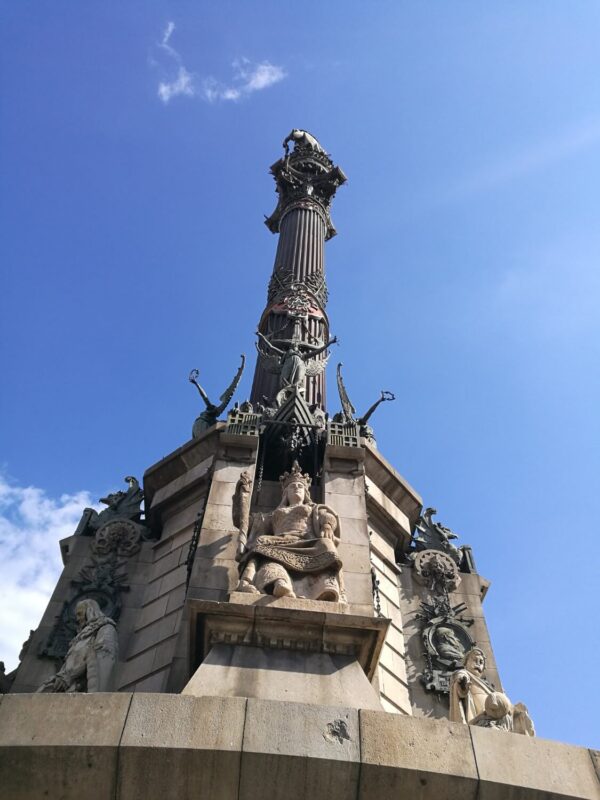

What to eat in Barcelona
Spanish food is famous the world over and Barcelona is the perfect place to try a variety of great Spanish dishes, including local Catalan cuisine. In Spain, lunch is considered the main meal of the day so you will often see larger lunches with lots of amazing food and wine. In the evenings, people tend to eat dinner later in Barcelona so don’t be surprised to see queues for popular restaurants at 11 pm. Do as the locals do and enjoy the longer nights and slower mornings. As well as local dishes, there is also a diverse range of food from all over the world on offer with some of the best restaurants in the country located here. Barcelona is home to 22 Michelin star restaurants, so if you want something special you’re in the right place. Here are some of our top picks of what to eat in Barcelona:
Paella – Considered the national dish of Spain, Paella consists of rice, saffron, good stock and a mixture of seafood or meat and vegetables cooked in a pan
Iberico ham – This is a dry-cured ham made from a specific breed of pig, and it is delicious!
Manchego cheese – A Spanish cheese aged between 60 days and 2 years which has a firm but buttery texture
Padron Peppers – A popular tapas dish of Padron peppers which are grilled until blistered and soft
Croquettes – Small deep-fried ovals of béchamel sauce with a variety of fillings such as ham, mushroom and chicken and covered in breadcrumbs
Sangria – An alcoholic punch of red wine, chopped fruit and other spirits and perfect on a warm afternoon
Money - Barcelona Travel Costs
The currency in Barcelona is the Euro (€). Credit & Debit cards are widely accepted throughout Spain and there are plenty of ATMs that accept foreign cards. A service charge is generally not added to the bill so you can leave a tip if you are happy with the service. A tip of 5-10% is the norm and you can round up for taxis. Barcelona is a reasonably priced city, considering its size and importance within Spain. It can be suitable for both the budget and luxury traveller. Depending on where you are in the city, prices can fluctuate a little. The area around La Rambla is where you can expect prices to inflate if they do. Here’s a guide for what you can expect to pay (per person) for:
A local draught beer – €3-€5 ($3.50-$6)
A coffee – €1.50-€3 ($1.80-$3.50)
A bocadillo (local sandwich) – €3-€5 ($3.50-$6)
Budget restaurant meal – €10-€15 ($12-$18)
Mid-range restaurant meal – €15-€30 ($18-$35)
High-end restaurant meal – €40 ($48+)
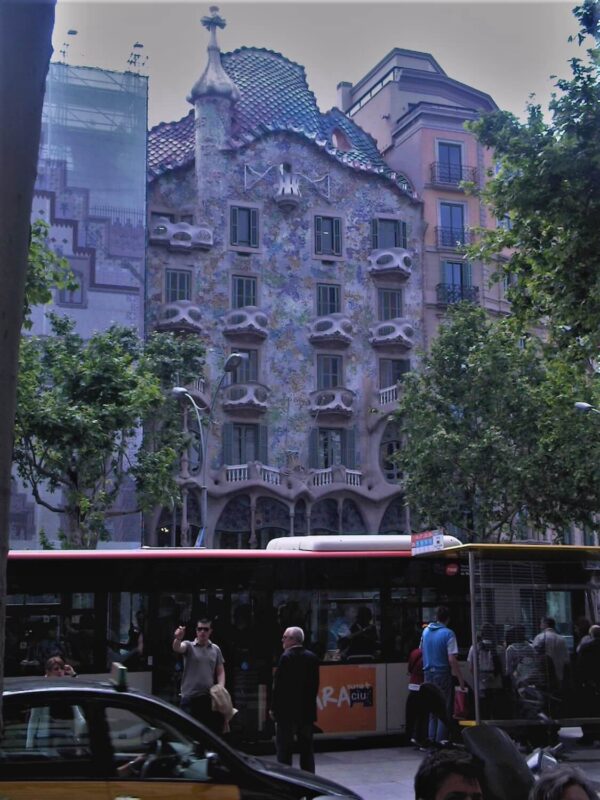
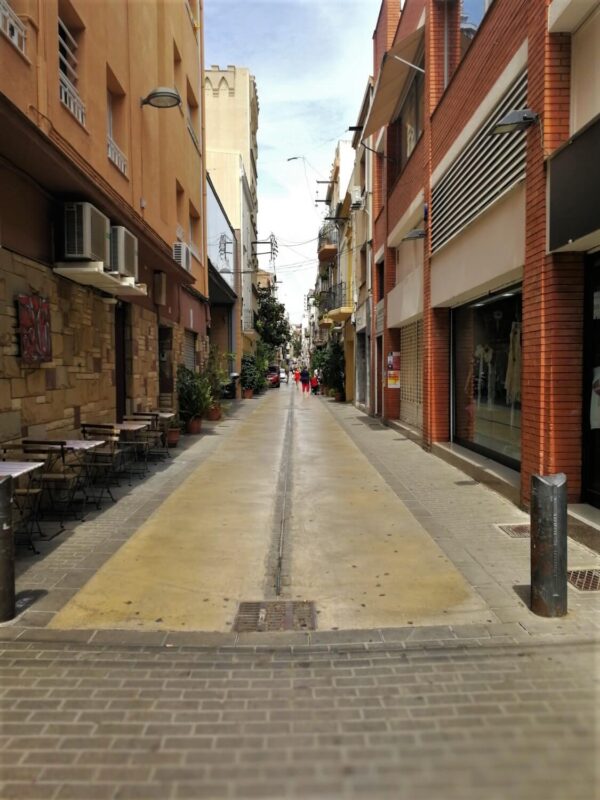
When to go to Madrid and for how long
The best time to visit Barcelona is May to June or September to October, when the weather is warm but not too hot and there are less crowds out of the peak season. There is so much to do in Barcelona that a trip of 5 nights is recommended to cover all the main sights and attractions but if you’re short on time then a long weekend will allow you to experience the city and see the major sites.
Local language and phrases
Speaking the local language, even if it’s just a few words or phrases is great when you’re visiting a destination, and Spain is no exception. Spanish locals really appreciate tourists making the effort and it’s a good way to show respect to different cultures. You can find out some basic Spanish phrases and words in our Spain travel tips section
Barcelona travel tips
– Barcelona is a very safe city and is safe for lone travellers, including lone females. However, there is an issue with pickpockets in the city so keep a watchful eye on your belongings, particularly on the metro and in crowded tourist areas
– There are a range of places to eat including those specialising in vegetarian, vegan and gluten free diets
– The tap water is safe to drink, however, in restaurants and bars, they will often only serve bottled water because the tap water isn’t very cold
Barcelona travel guide written in June 2021
This site uses affiliate links. When you click on a link and purchase an item, we may be compensated on qualifying purchases. However, this is at no extra cost to you. See our affiliate disclosure for further information.
Pin this Barcelona Travel Guide to save it for later!
